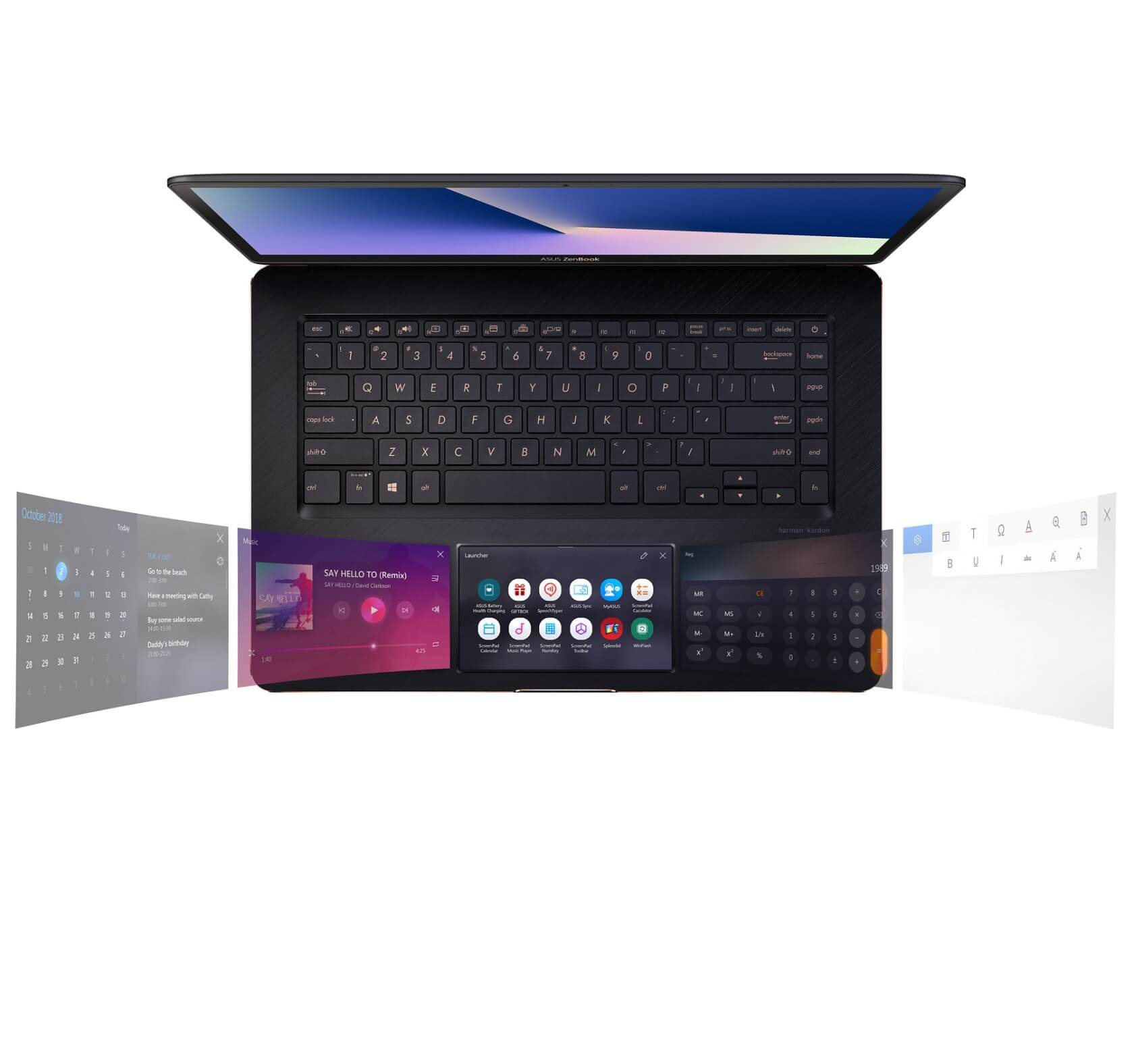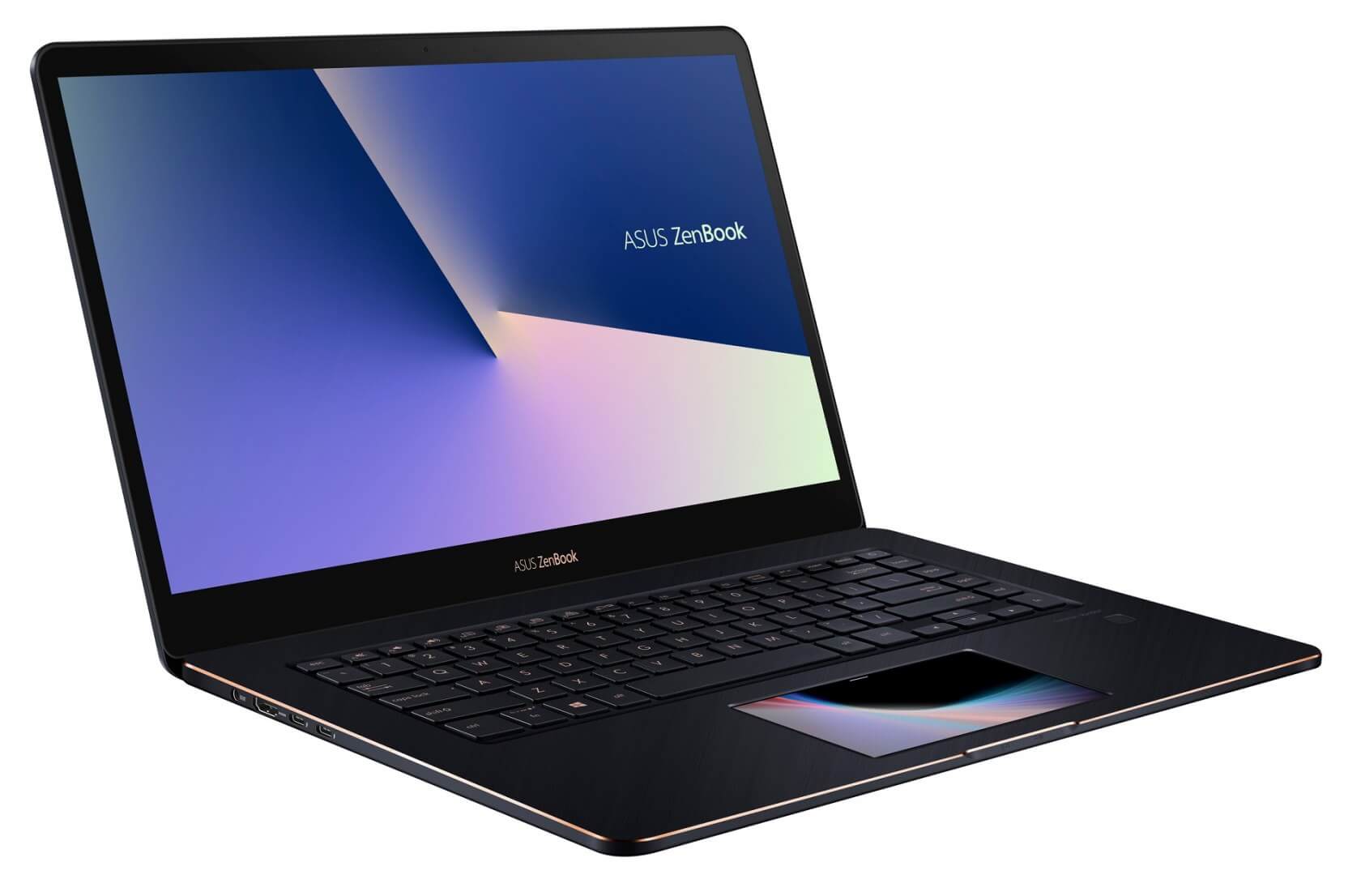Forward-looking: Following the unveiling of its ROG phone and ROG Balteus mousepad with wireless charging at Computex, Asus has just revealed its new ZenBook Pro 15. While new laptops arrive all the time, this one comes with a unique feature: a 5.5-inch touchscreen where you’d traditionally find the touchpad.
Also called the UX580, Asus says the laptop features “the world’s first smart touchpad.” It’s actually a Windows Precision Touchpad overlaid onto a 5.5-inch 1080p IPS display—hitting F6 switches between the two functions.

While in ScreenPad mode, users can access an app launcher, music and video playback controller, calculator, digital numeric keypad, calendar, and more. Asus says it will also work with some apps, including Microsoft Office, Spotify, and YouTube out of the box, with more coming in the future—an SDK will be made available sometime in Q3. There’s also an extender mode that allows users to move any open windows from the main display onto the smaller screen.
The secondary display does bring to mind the Touch Bar on the MacBook Pro, though Apple’s implementation is much more limited. There’s also Project Linda, a concept shown off a CES that involved a heavily modified Razer Blade laptop with a phone dock in place of a touchpad, but in that case it’s the Razer Phone that powers the whole system when inserted.
The ZenBook Pro 15, on the other hand, is a powerful machine. It comes with a 15.6-inch 4K UHD display that the company claims offers excellent color reproduction—132 percent coverage of the sRGB color space and 100 percent of Adobe RGB. It also boasts bezels that are just 7.3mm thick, a maximum brightness of 400 nits, and a 1200:1 contrast ratio.

When it comes to CPUs, the laptop offers the choice of a Core i5, i7, and even a six-core 8th-gen Core i9. Buyers also get 16GB of RAM. Additionally, it can be fitted out with a GPU up to a GeForce GTX 1050 Ti with 4GB of RAM.
The UX580 also has a fingerprint sensor, two USB-C/Thunderbolt 3 ports, HDMI, two USB 3.1 Type-A ports, a microSD card slot, and a headphone jack. A 14-inch version of the ZenBook Pro with a ScreenPad is set to arrive later this year, featuring an improved 13-hour battery life.
As you might have guessed from the top GPU option, the ZenBook Pro isn’t really designed for gamers. The company says it’s been built mainly for creators such as photographers and video makers. It goes on sale in the middle of July starting at $2,299.
https://www.techspot.com/news/74930-asus-new-laptop-has-touchpad-also-touchscreen.html